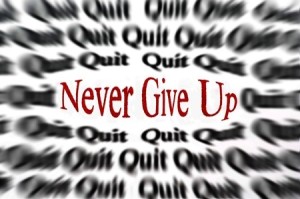Getting Set to Cope with Cravings
On his blog, Terence Gorski described a three-stage model for addicts and alcoholics to manage cravings without them leading back to active drug or alcohol use. The first stage of set-up behaviors was discussed in a previous article, “Ready to Cope with Cravings.” This article will review the next two stages, trigger events (The Set Stage) and the craving cycle (The Go Stage).
The Set Stage
There are four main triggers that can activate immediate, powerful cravings during the Set stage, according to Gorski. Thinking triggers arise out of the mind-set or pattern of thought that follows the person into early recovery. Abstinence doesn’t magically make them disappear. Feeling triggers often come from sensory cues—seeing, hearing, touching tasting or smelling something that reminds the person of their drug of choice. “It also results from experiencing feelings or emotions that were normally medicated by use.” Behavioral triggers stem from behaviors and rituals that were previously associated with drug use. Situational triggers include relationships or circumstances that used to be associated with using.
There can be some overlap between set-ups and triggers. What distinguishes them in the discussion by Gorski seems to be the ability of a trigger to activate the immediate experience of a craving cycle.
Euphoric recall or fantasy that continues unchecked could become a thought or feeling trigger. Listening attentively as someone describes his or her own struggles with past addictive behavior or current struggles with set-ups or cravings can lead to a thought trigger. Seeing movies that portray drug use can initiate a strong craving. Intravenous drug users can be triggered when their blood is drawn. Alcoholics can be triggered by hearing someone snap open a soda can.
Certain situations, rituals or behaviors that become associated with using can become behavioral or situational triggers. Think here about the principles of classical Pavlovian conditioning. One person I knew couldn’t listen to a certain CD, because he has regularly listened to it when he was high. Another individual discovered that sitting and thinking in a particular chair in their home was a trigger, because that was where she had sat when she drank. Another person avoided the cleaning supply isle in supermarkets because they had used chore boy scrubbers to make their crack pipes.
The often-repeated mantra to avoid People, Places and Things associated with addiction will include all the above categories of set-ups and triggers. But the nuance of addictive experience means that not every physical, psychological or social set-up is equally dangerous to all addicts and alcoholics. Not all thinking, feeling, behavioral or situational events will immediately trigger a craving cycle with all alcoholics and addicts. Not all People, Places and Things put addicts and alcoholics equally at risk of cravings or relapse. The failure to acknowledge this will potentially awfulize recovery (one of the psychological set-ups).
Using Gorski’s stages of set-ups and triggers, I’d suggest that any person, place or thing associated with addiction should be considered to be a set-up. Careful examination, discussion and analysis of these set-ups will determine whether they have a greater or lesser potential to become a trigger and activate a craving cycle for the individual. The earlier a person is in recovery, or the more stressful or unstable the life of a person with longer-term recovery is, the more careful they should be to avoid set-ups. The more stable the person’s life and recovery is, the greater nuance they can have in their exposure to set-ups. Any set-up that carries the potential to become a trigger for the individual should be avoided. The diversity of experiences when using, even among individuals with the same drug of choice, means that not every physical, psychological or social set-up is equally dangerous to all addicts and alcoholics.
The Go Stage
The third stage of craving is the actual craving cycle. Here the obsessive thoughts to use triggers a compulsive desire to get high, with physical cravings for the drug and then actual drug seeking behavior occurs.
When an obsession becomes activated, the person experiences a loss-of-control with their thinking. “Intrusive thoughts invade their mind and they can’t turn them off.” The obsession will quickly become a compulsion. Despite knowing it would be dangerous to use drugs, in a compulsion the person has an overwhelming urge to get high. This obsession and compulsion leads to full-blown physical craving, which can be quite powerful. The person may have a rapid heart beat, shortness of breath, perspiration; even an actual sense of tasting smelling, or feeling the drug they are craving.
Attempting to manage the cycle of obsession, compulsion and craving, the person begins active drug-seeking behavior. They might return to their old hangouts; call up old drug using friends. In other words, return to people, places and things associated with addiction. This exposure to more triggers intensifies the craving cycle. Ultimately, the person becomes overwhelmed with this cycle of obsession-compulsion-craving and they return to active drug use.
I have read and used Terence Gorski’s material on relapse and recovery for most of my career as an addictions counselor. I’ve read several of his books and booklets; and I’ve completed many of his online training courses. He has a blog, Terry Gorski’s blog, where he graciously shares much of what he has learned, researched and written over the years. This is the second of a three-part series on coping with cravings. The other two articles are “Ready to Cope with Cravings” and “Preventing and Stopping Cravings.” You can access additional articles stemming from Terence Gorski’s material under the Gorski link on Faith Seeking Understanding.







